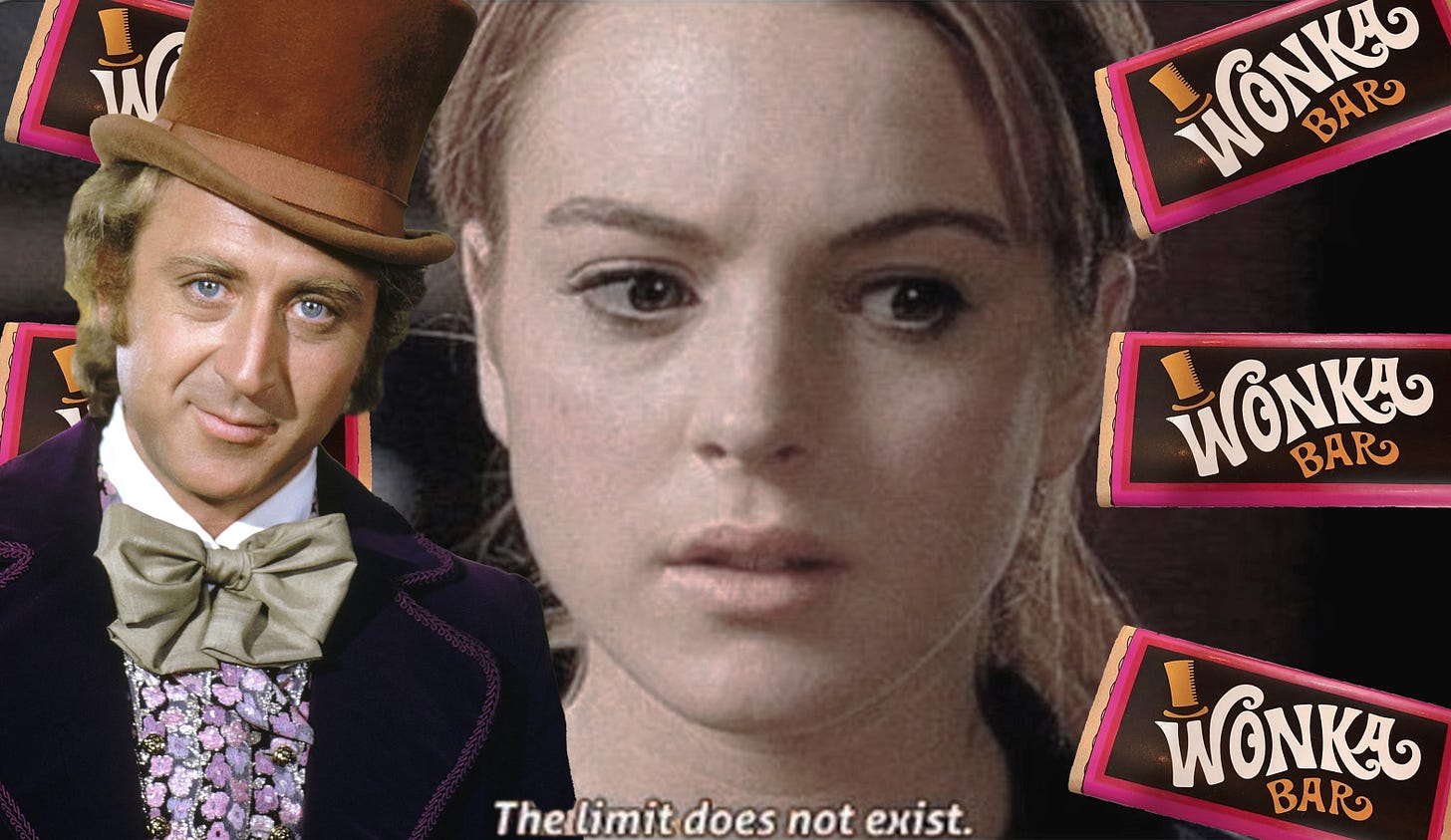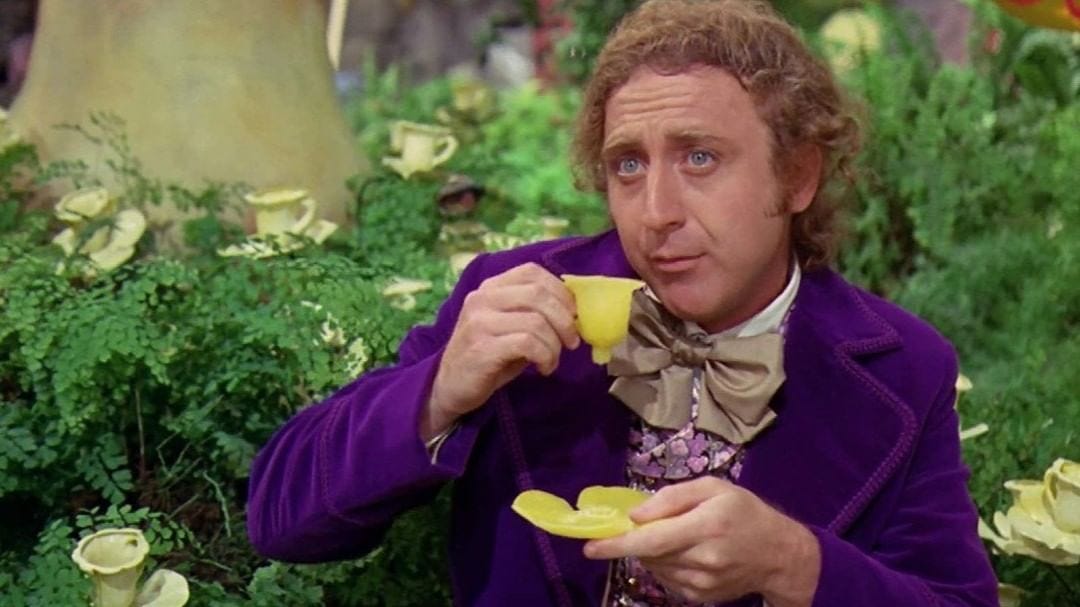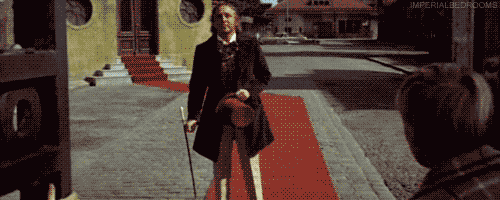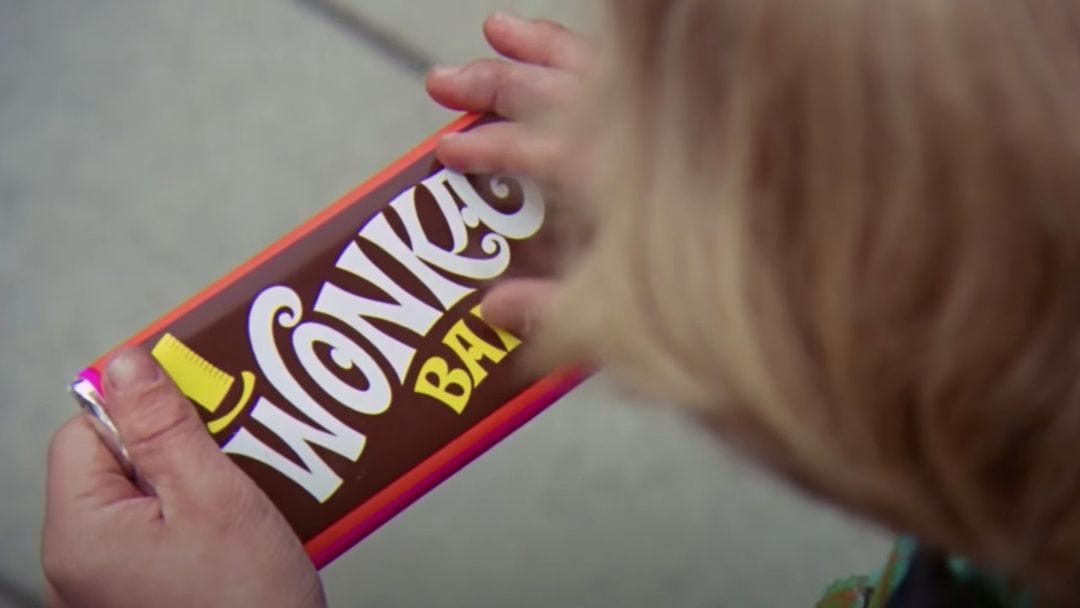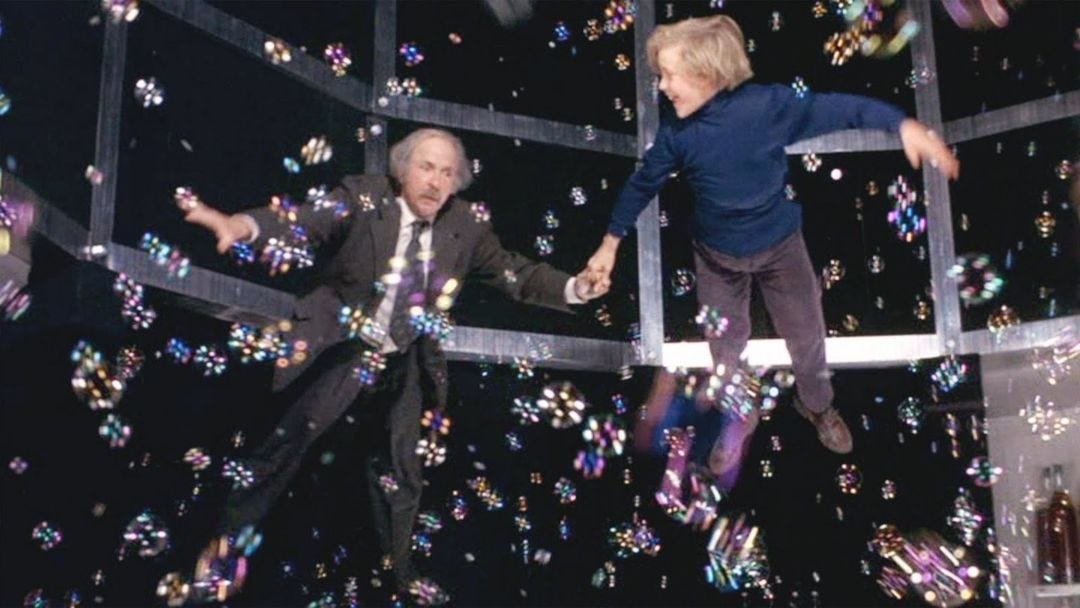Willy Wonka & the Chocolate Factory, The Language of Cinema + The Limitations of Tastebuds
Truths, lies, sugar, slavery, et al
Willy Wonka & the Chocolate Factory Film Flavor Review
Film Review: ★★★★★
Food Review: ★★★★★
Based on the 1964 novel “Charlie and the Chocolate Factory” by Roald Dahl, this film is one that requires little introduction.
This film, though divisive, is my father’s favorite childhood film, as well as one of mine, and I grew up watching it as often as possible. Probably one of the finest films ever made for younger audiences, Willy Wonka & The Chocolate Factory is made that much more special by the one and only Gene Wilder.
Pure Imagination and Cinema: The Language of Telling as Many Lies as Truths
Hold your breath, make a wish, count to three…
In an effort to help you win your next local movie-themed bar trivia night: The following excerpt is one of Wilder’s demands before accepting the part of Wonka, courtesy of Letters of Note:
“When I make my first entrance, I’d like to come out of the door carrying a cane and then walk toward the crowd with a limp. After the crowd sees Willy Wonka is a cripple, they all whisper to themselves and then become deathly quiet. As I walk toward them, my cane sinks into one of the cobblestones I’m walking on and stands straight up, by itself; but I keep on walking, until I realize that I no longer have my cane. I start to fall forward, and just before I hit the ground, I do a beautiful forward somersault and bounce back up, to great applause… Because from that time on, no one will know if I’m lying or telling the truth.”
The letter not only exemplifies the utmost levels of care that went into Wilder’s performance; it underscores the need to make the written work into a motion picture.
We love cinema because it is the language of telling as many lies as truths. The visual language used to convey the levels of mystery that encircle the character of Willy Wonka demonstrates the same robust visual vocabulary required to create the visceral, aromatic candy-devouring sequences the novel implored Hollywood to film.
“In order to understand today's world, we need cinema, literally. It's only in cinema that we get that crucial dimension which we are not ready to confront in our reality. If you are looking for what is in reality more real that reality itself, look into the cinematic fiction.” - Slavoj Zizek in The Pervert’s Guide to Cinema
From the moment viewers meet Wilder’s Wonka, we do not know if he’s the antichrist or the second coming. As Augustus Gloop struggles, stuck in a giant FDA-oversight of a tube of chocolate, Wonka exclaims, “The suspense is terrible, I hope it’ll last!” When the masterfully named Mike Teevee runs to obliterate his DNA via Wonkavision, Wonka yells “Stop. Don’t. Come back,” in the least sincere tone ever recorded. When Wonka twiddles his panflute and states Violet Beauregarde must be juiced “immediately” before she explodes like the blueberry she is becoming, and then lets the Oompa Loompas sing for over sixty on-screen seconds before they roll her away, you can’t help but wonder if you’re watching a children’s movie or a slasher. Director Mel Stuart clearly knows cinema was made for drawn out agony, suspense, piling on, making situations more and more extreme until you’re screaming at the screen.
Pure Imagination and Sugar Seduction
The sheer quantity of criticism, often fair, floating around about this movie is astounding: Is the Wonka Factory the Garden of Eden, and the characters archtypes of the Seven Deadly Sins? Are all the kids victims of post-war capitalism and greed, making Slugworth, a new character for the film, a symbol of how business favors the cutthroat? Is the apparent enslavement of the Oompa-Loompas vile beyond salvation? Does the fact that studios had other screenwriters finish Dahl’s script and changed the title entirely void the nutritional value of the project?
Maybe, (and all of those links are great reads) but I submit to you this: While we can argue Willy Wonka is not about candy, it is one of the world’s films that is the most about candy. And shouldn’t we treat it as such?
In the years before the wheel (probably), the humans that ate the most fruit had more babies, and now our sugar cravings are fed and amped up to the heavens. Unsurprisingly, while adults have the capacity to think something has 'too much sugar,’ scientists have yet to find a limit to the concentration of sugar young children prefer. While we wait for human evolution to catch up and learn that many of us have essentially unlimited access to near lethal doses of glucose at any time, children are still born every day with scientifically insatiable sweet tooths.
I made this gif for you.
By this measure, Willy Wonka thrives. I imagine the only way to get an iPad kid to watch a film made before the year 1989 (B.T.LM, before The Little Mermaid) is to throw Stuart’s Wonka on. Before Augustus Gloop meets his maker in the chocolate river, the candy-filled forest shown in the “Pure Imagination” scene is one that still captivates the tastebuds of the young and old alike (see video above). When Grandpa Joe get’s off his questionably-disabled behind to take Charlie to the Wonka factory, the adult viewer realizes we, too, can tap into the feral, one-track, eyes-on-the-prize candy brain we once had in our juvenile years.
Roald Dahl may have found the overall 70’s-happy-sitcom energy of the film offensive, but can we really blame the filmmakers for taking a whack at making the adaptation sickly sweet? (Plus, they never confirm in the film whether those other kids really died violently sugary deaths or not, so I’d say it’s dark and twisted enough, right?)
Though Tim Burton and Johnny Depp’s 2005 attempt at a new film rendition fell flat, and Dahl would have likely hated it too, I have meager hopes of the upcoming 2023 Wonka origin story starring Timothée Chalamet, and plan to write my thoughts about it here. After all…
“A little nonsense now and then is relished by the wisest men” - Willy Wonka (Quote from the 1971 film and the book’s sequel, “Charlie and the Great Glass Elevator”) 🍭🍫🍭🍫🍭


